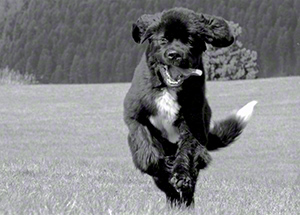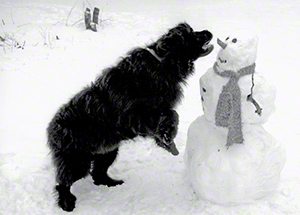While getting a puppy in and out of a car might seem as simple as lifting him or letting him jump in or out, the reality of the matter is more complex; as your dog gets both larger and older, how he enters and leaves the vehicle becomes an issue with both practical and health implications. The best time to give this matter some serious thought is now, while your puppy is young and open to new experiences.
The popularity of SUVs, pickup trucks, crossovers, and minivans means that many dogs today find themselves having to get in and out of vehicles where jumping seems the only choice. Yet jumping is not the only choice, nor is it the safest. Dogs can injure themselves jumping down from even relatively short heights; puppies, in particular large-breed puppies such as Newfoundlands, can sustain long-term damage to joints and bones that are not yet fully formed. For this reason, many experienced largebreed owners never let their puppies jump down, and often keep them from routinely using stairways until they are older (though it’s certainly a good idea to introduce your puppy, under close supervision, to stairs at an early age so he or she doesn’t develop “stair phobia.”)
The best way to keep your dog from being injured when exiting a vehicle is to use either a ramp or steps. There’s no inherent advantage of one over the other, though some dog owners prefer ramps as a way of even further minimizing joint strain. Getting your dog accustomed to ramps or steps is much easier when he’s a puppy, and will prove invaluable not only for protecting the dog’s joints but protecting your vehicle’s interior as well.
There are a multitude of ramp and step models available from pet supply stores; your best bet is to look at the varieties offered, from telescoping ramps to swing-away steps that attach to a vehicle’s trailer hitch, and consider all the factors. Ease of use should be a prime consideration; the best ramp or set of steps in the world won’t do your dog any good if it’s so heavy or awkward that you stop using it. So look at weight, price, ease of storage, size (make sure it will fit safely in your car when travelling with your dog), and capacity; keep in mind you’re buying a ramp that will be used for a dog that will be very large and very heavy.
Make your choice as early in your puppy’s life as you can so you can begin introducing your Newf to the ramp or the steps while they are most open to and accepting of new experiences. Lots of praise, treats, and some patience will make the introductory process go smoothly, and your dog will benefit over the course of his entire life. (Needless to say, older dogs or those with arthritis or other mobility issues will benefit the most; ramps or steps make it possible for dogs to get in and out of a vehicle when that would be impossible for them on their own – and lifting a full-grown Newf into a vehicle is definitely not something you want to find yourself having to do.)

